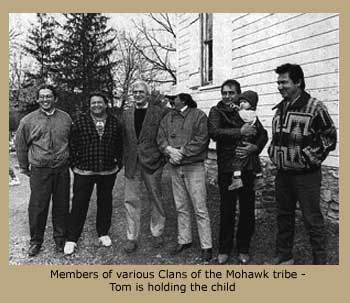 |

Basic Call to Consciousness

Intention

Invented White
History & Imagery

In the Beginning

First Nations Governance

Trail of Tears

Tragedy of
Little Bighorn

Massacre at
Wounded Knee

Duwamish/Suquamish
Displacement

Cultural Genocide

Native Values

Impact of European Immigrants

The Take-over

Called ‘Indian’ or....

Cultural Genocide - Boarding schools

Native Values &
Way of Life

Morality

Depression &
Substance abuse

Cultural Distinctions

Spiritual Sensibilities

Language

Living Two Lives

Leaders or Rulers

Written or Oral

Painful History

Iroquois Conservation

Chief Seattle’s
Farewell Speech

Spirit Road

|
 |

Intention
The efforts of this material is in no way to romanticize First Nations Peoples. I also take care to not invest First Peoples with a common identity nor reduce them to collective objects of sympathy or pity or even veneration. Tribes, culturally heterogeneous and political sovereignty, engage in distinct practices unique to them and in relation to their specific geography. Even their dwellings were unique to their geography. The many surviving tribes across this country have their own language and their own stories and customs. When a story of one practice is described, it is by no means inferred that it is subscribed to by all tribes. What most tribes do seem to hold in common, however, is reverence for the land and their natural resources. First Nations Peoples have historically been the conservationists of this land as these narratives will reveal.

I am also sensitive to the issue of misappropriating American Indian culture, traditions spirituality and do my best in providing a context for this information. My intention is in offering an avenue for more responsible forms of cross-cultural relationship.

As Cherokee activist and scholar, Andrea Smith states: “Sometimes it seems that I can’t open a feminist periodical without seeing ads promoting white feminist practices with little medicine wheel designs. I can’t seem to go to a feminist conference without the woman who begins the conference with a ceremony being the only Indian presenter. Participants feel so “spiritual” after this opening ceremony that they fail to notice the absence of Indian women in the audience of participants or Native American issues in the discussion.” (1994)

Also, contrary to negative stereotyping, among many traditional First Nations People were outstanding orators, powerful and moving public speakers throughout the time white people had first met them. From childhood, First Peoples of this land learned the art of public speaking. This art was developed in story-tellings, in tribal counsel speeches, peace negotiations, in religious ceremonies, in public ridicules and many other activities of the tight-knit groups. Records now exist of heart-rending speeches made by leaders of First Nations, requesting, beseeching the U.S. government for peace, to honor their freedom, and for negotiating safe living for their tribes, their families.

This venue is created to celebrate the resurgence of traditional consciousness and values of the First People and to  debunk the great American mythology including the pejorative stereotyping of First Nations people. debunk the great American mythology including the pejorative stereotyping of First Nations people.

A connection exists between these two intentions. No matter what our skin or eye color, no matter from where our ancestors originated, no matter to what religion our parents subscribed-our Beloved Planet is in trouble and we have been asleep to our contribution in this problem. Traditionally, First People have known much about that which we must learn in order to support our planet’s ability to sustain our needs in a good way. This does not mean that we become like them; rather, that we understand the values and respect that had been such an integral part of the daily lives of First Nations People. Many indigenous cultures demonstrate a model of partnership and cooperation rather than domination.

It seems important, today, that we learn about the actual experiences of the First People, our brothers & sisters. That we understand their values which informed their cultures and way of life so that we recognize the distortions, omissions and fallacies that were passed on to us in the mythic guise of true history. First, unexamined history is doomed to repeat; and, we can learn much from the first inhabiters of this land and to honor and heed their wisdom and respect for all of life that was passed down by their ancestors. Contemporary First People tribes will determine whether the traditional values and way of life described here still apply, today.

In Profiles in Wisdom,  Tom Porter, of the Mohawk people in what is now called New York expresses: “Our teaching is that man is the least strong, in the ways of life on the Earth...most undisciplined of all creations. Of course, if one believes man is the head dominator, well, then it’s alright to pollute all the rivers and the water, the air and the land. It’s alright to kill the buffalo off. It’s alright to kill the elephants in Africa for their ivory and make money. It’s alright to do all those things and it’s alright to take the land in this country away from the Native People because they aren’t really humans. Tom Porter, of the Mohawk people in what is now called New York expresses: “Our teaching is that man is the least strong, in the ways of life on the Earth...most undisciplined of all creations. Of course, if one believes man is the head dominator, well, then it’s alright to pollute all the rivers and the water, the air and the land. It’s alright to kill the buffalo off. It’s alright to kill the elephants in Africa for their ivory and make money. It’s alright to do all those things and it’s alright to take the land in this country away from the Native People because they aren’t really humans.
 “In the last thirty to forty years there has been an orchestrated attempt by our religious leaders, in the Indian nations, to once again have a dialogue with the people of the U.S. We tried before, but the European-Americans were so entrenched in their belief that--they have convinced themselves that--they are the most superior people in the world. And, that belief made it impossible for them to listen and to understand such concepts.” “In the last thirty to forty years there has been an orchestrated attempt by our religious leaders, in the Indian nations, to once again have a dialogue with the people of the U.S. We tried before, but the European-Americans were so entrenched in their belief that--they have convinced themselves that--they are the most superior people in the world. And, that belief made it impossible for them to listen and to understand such concepts.”
Click on the rug to return to the top of the page.

 Home Home
 Quiz Quiz
 About Author About Author

|
![]() ©2015 Lilthea Designs
©2015 Lilthea Designs